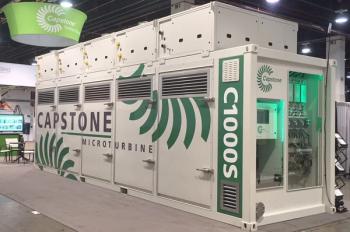
- July/August 2024
- Volume 65
- Issue 4
Improving Steam Turbine Reliability
Implementing phased array ultrasonic testing (PAUT) in turbine inspection and maintenance marks an evolution from traditional maintenance to more advanced solutions that ensure efficiency and reliability.
Steam turbines are widely used in mechanical drive and power generation applications. As they serve as the backbone of many power and chemical plants, these machines are subjected to rigorous operational demands. It is therefore important to maintain their optimal performance and longevity. Unfortunately, traditional inspection methods are increasingly inadequate in meeting the evolving demands of turbine maintenance. The inherent limitations of these methods pose a significant risk, as undetected issues can lead to disruptive failures, resulting in costly repairs and downtimes.
Recognizing the imperative for a more sophisticated and reliable approach, Mitsubishi Heavy Industries Compressor International Corp. (MCO-I) implemented an advanced solution: PAUT. As a relatively new technology in steam turbine rotor diagnostics, PAUT aims to redefine the industry’s approach to protecting the health and longevity of these critical machines, boosting efficiency in steam turbine maintenance.
A NON-DESTRUCTIVE TESTING TECHNIQUE
PAUT is a non-destructive testing technique that employs multiple ultrasonic elements and advanced signal processing to provide insight into the condition of steam turbine blade attachment areas. MCO-I employed PAUT, which is implemented daily in the medical field, to improve safety and preventative maintenance.
Enhanced crack detection
Unlike traditional methods, PAUT’s ability to scan with improved accuracy ensures that anomalies as small as 0.020 - 0.030 inches can be identified. By detecting corrosion pitting or crack-like indications in their early stages, PAUT provides a proactive defense against potential turbine malfunctions that could lead to catastrophic failures. The early identification of rotor damage symptoms allows for timely intervention and targeted maintenance, mitigating the risk of unexpected failures and ensuring the sustained reliability of steam turbines.
Remaining life assessment
PAUT technology provides inputs for a detailed analysis of the structural integrity of turbine components. This assessment not only identifies existing flaws but also offers insight into the remaining life of the components. Armed with this predictive data, turbine users can implement proactive maintenance interventions, improving the reliability of the turbines and mitigating the risk of unexpected failures.
Stress corrosion cracking mitigation
One of PAUT’s key contributions is identifying potential stress corrosion crack indications early, enabling customers to employ strategic upgrades involving improved corrosion-resistant materials. This proactive approach reduces long-term maintenance costs and ensures the entire turboset’s long-term reliability.
By shedding light on potential issues that may compromise the integrity of turbine components, PAUT has proved on many occasions to be an effective tool in maintaining cost-effective, long-term operation.
CASE STUDIES
PAUT is an asset in identifying sub-surface flaws, especially in rotors. Pinpointing vulnerabilities allows clients to make informed decisions about material upgrades. This strategy enhances the resistance of the system against corrosion damage and minimizes the likelihood of unexpected failures and associated operational disruptions.
Savings over surprise spending
Through a PAUT inspection and a subsequent remaining life evaluation, a customer discovered that they only had seven years left on their rotor. This discovery prompted them to revise their maintenance strategy, planning, resource allocation, and budgeting for a new rotor well in advance. This proactive approach contrasts with the potential surprise and financial strain that might have ensued without the insights of PAUT.
Problem-solving strategies
Another customer detected damage to their turbine rotor while using PAUT. This early detection allowed for immediate corrective action, averting potential failures that could have resulted from waiting. Traditionally, without the capabilities of PAUT, such damage might have gone unnoticed until a critical stage was reached, leading to severe consequences for the turbine’s reliability, operational safety, and plant production outlook.
Improvements to existing rotors
In one case, PAUT implementation shared valuable insight into the reliability of current components, prompting a decision to upgrade the rotor’s corrosion resistance with a stainless-steel rotor overlay. It was demonstrated that improvements in rotor reliability could be achieved, even when compared with the performance of a new rotor.
PAUT RECOMMENDATIONS
The successful utilization of PAUT hinges on the collaboration between service providers and customers. To ensure the efficacy of PAUT inspections, customers are required to provide vital information about the size, location, and environmental conditions of the rotor under examination. In cases where the rotor is not a Mitsubishi product, customers provide details about the original geometry of the machine, such as spacing between the disks or blade rows.
This information exchange serves as the foundation for tailoring PAUT inspections to the unique specifications of each turbine. By understanding the intricacies of the rotor’s dimensions, inspection areas, and the environmental factors to which it is subjected, PAUT can be customized for optimal accuracy and thoroughness. Moreover, this inspection approach is not merely a one-time event but is recommended as part of a proactive strategy, particularly at the service life milestone of 10 years.
CONCLUSION
PAUT can play an important role in ensuring the reliability and safety of steam turbines. PAUT’s efficacy in detecting cracks, assessing remaining life, and addressing stress corrosion cracking is thoroughly examined in the context of turbine inspection and maintenance, highlighting its accuracy and ability to shape decisions on optimizing performance through strategic maintenance schedules. PAUT technology paves the way for clients to proactively address challenges, meet production goals, and make strategic investments in the longevity and reliability of steam turbines.
Justin Fleming is the Customer Service Business Director for Mitsubishi Heavy Industries Compressor International Corp. at the Pearland Works facility in Houston, TX.
Articles in this issue
over 1 year ago
Myth Busters: What's so Super About Supercritical CO2?over 1 year ago
Vendor Spotlight: Regal Rexnordover 1 year ago
Varnish is Preventableover 1 year ago
A History of Hydropower and Turbomachineryover 1 year ago
Gas Turbine Sales Report: 2023 Holds Its Ownover 1 year ago
Turbomachinery International: July/August 2024Newsletter
Power your knowledge with the latest in turbine technology, engineering advances, and energy solutions—subscribe to Turbomachinery International today.





